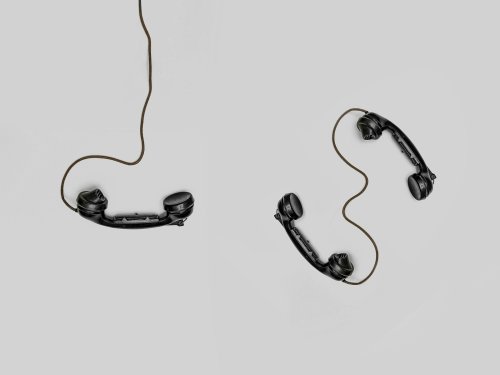Is Teasing a Love Language? Learn about Healthy Teasing
Discover how teasing in love relationships can enhance intimacy, trust, and humor. Learn the art of playful banter and its importance in building a strong bond.

Teasing in relationships can be a fascinating mix of affection, humor, and psychology. For many couples, playful teasing isn’t just a passing joke—it’s a subtle love language. It’s how partners share laughter, build emotional intimacy, and express affection without words. From flirty banter to inside jokes that only the two of you understand, teasing can become the heartbeat of a relationship—a reminder that love doesn’t always need to be serious to be sincere.
But teasing walks a fine line. What feels lighthearted to one person can feel hurtful to another. When done with care, teasing strengthens connection, eases tension, and creates a sense of shared playfulness that fuels romance. When done carelessly, it can erode trust, spark resentment, and turn affection into discomfort.
So, is teasing really a sign of love—or a hidden warning sign? Understanding the psychology behind teasing, the role of consent, and how it reflects emotional dynamics is essential. In this article, we’ll explore when teasing becomes a form of love, when it turns toxic, and how couples can use humor to build a stronger, more connected relationship.

Does Teasing Mean Love?
Teasing can absolutely be a sign of love—when it’s done with warmth, respect, and mutual understanding. In many romantic relationships, playful teasing serves as a subtle way to express affection and emotional connection. It’s one of those unspoken love languages that keeps relationships vibrant and fun. When partners tease each other in a lighthearted and mutually respectful way, it often reflects comfort, trust, and closeness. It is how couples express, “I understand you, I cherish you, and I feel sufficiently secure to share a joke with you.”
Teasing as a love language helps keep romance alive by adding humor and spontaneity to everyday interactions. A gentle joke, a shared laugh, or a playful challenge can deepen emotional intimacy and remind both partners that love isn’t always about grand gestures—sometimes, it’s about those small moments of laughter that only the two of you understand and add some spice to a relationship.
However, not all teasing in relationships is healthy or loving. When teasing veers towards mockery, embarrassment, or control, it ceases to be affectionate and transitions into harmful behavior. Toxic teasing often comes from a place of insecurity, resentment, or emotional manipulation. Instead of making the other person feel loved, it creates feelings of humiliation, anxiety, or self-doubt.
The key difference lies in intent and impact. Loving, healthy teasing builds connection and joy—both partners laugh, and no one feels small. Hurtful teasing, on the other hand, uses humor as a weapon. It can damage emotional safety, erode trust, and even lead to long-term relationship strain.
So, does teasing mean love? It depends on how it’s done and how it makes you feel. When teasing strengthens closeness, respect, and laughter, it’s a beautiful form of emotional affection. But when it leaves you feeling belittled or uneasy, it’s no longer a love language—it’s a warning sign.

Is It Normal to Tease Your Partner?
Yes—teasing your partner is perfectly normal, and in many healthy relationships, it’s a sign of comfort and emotional closeness. Playful teasing in relationships helps couples keep things lighthearted, build inside jokes, and strengthen their bond. It can express affection in a fun, indirect way that deepens connection without needing grand romantic gestures. When both partners understand and enjoy the humor, teasing becomes part of their shared love language—a reminder that love can be joyful, spontaneous, and full of laughter.
However, teasing is only healthy when it’s mutual, respectful, and good-natured. The moment it starts to sting, embarrass, or feel one-sided, it stops being playful and starts becoming emotional harm. In strong relationships, both partners know each other’s limits and use teasing to uplift rather than undermine. The key is always balance—teasing should make your partner feel loved, not insecure.
How can you tell if your partner's teasing is healthy or harmful?
Not all teasing in relationships is the same. While playful teasing can bring couples closer, toxic teasing often chips away at trust and emotional safety. The difference lies in how it makes you feel. Healthy teasing should make you smile, not question your worth or your partner’s intentions.
Ask yourself the following questions:
- How do you feel after being teased by your partner?
- Do you laugh and feel loved—or do you feel hurt and embarrassed?
- Does teasing make you feel closer to your partner or emotionally distant?
- When your partner teases you, does it strengthen your sense of love and safety?
- Do you feel respected and protected, or criticized and belittled?
If most of your answers reflect laughter, comfort, and closeness, your partner’s teasing is likely healthy and affectionate. However, if it often leaves you anxious, small, or unsure of their love, it may signal unhealthy teasing or emotional manipulation—and that deserves attention.

Is Teasing Good Flirting?
When done with care and respect, teasing can be one of the most natural and charming forms of flirting. It brings a sense of playfulness, humor, and spontaneity into a conversation, helping two people form a connection without the pressure of being overly direct. A well-placed tease can catch someone’s attention, spark chemistry, and make them smile—all while keeping the interaction fun and comfortable.
Healthy teasing in flirting builds a relaxed, lighthearted dynamic where both people feel acknowledged and emotionally safe. It breaks the ice, reduces tension, and shows confidence without crossing personal boundaries. The key is balance: you make the other person laugh while still showing genuine affection and respect. When teasing feels mutual and kind, it can be a beautiful way to nurture attraction and emotional intimacy.

How can you tell if someone's teasing is good or bad flirting?
Not all teasing is created equal. Good teasing and flirting are mutual—both people willingly take part and enjoy the exchange. It feels playful, affectionate, and respectful. Healthy teasing invites laughter and connection, not discomfort or humiliation.
On the other hand, bad teasing can feel one-sided or coercive. When someone teases to belittle, manipulate, or make another person feel insecure, it crosses a line. Instead of building closeness, it damages trust and emotional safety. A good rule of thumb is simple: if both people are laughing, it’s likely good flirting; if one person is hurt or embarrassed, it’s not.
Does it mean a guy likes you if he teases you?
In many cases, teasing is a subtle sign that a guy likes you. Gentle teasing often serves as a low-pressure way to express interest, grab attention, or make you smile. When a man teases you affectionately—making light jokes, finding excuses to interact, or gently poking fun—it may be his way of showing attraction while testing the waters to see how you respond.
However, not all teasing stems from affection. Some people tease to mask insecurity, assert dominance, or simply entertain themselves at someone else’s expense. The difference lies in how it makes you feel. If his teasing feels kind, humorous, and respectful, it likely comes from a place of interest. If it feels demeaning or uncomfortable, it’s best not to confuse that behavior with affection.
Do guys tease girls if they like them?
Not necessarily. Every person expresses attraction differently. While some men use playful teasing as a way to flirt, others prefer more direct gestures of affection—offering compliments, showing interest in your life, or planning thoughtful interactions.
Additionally, not all teasing indicates romantic intent. Some men tease out of habit, friendship, or even insecurity. Understanding the tone, context, and frequency of teasing can help you interpret it correctly. A good sign of romantic teasing is that it’s consistent, lighthearted, and often paired with other gestures of care or attention.

How do you tease a guy you love?
When teasing someone you love, it's important to maintain a fun, loving, and considerate tone. Teasing should make your partner feel appreciated, not attacked. Avoid sensitive topics or anything that might touch on insecurities or past hurts. Instead, focus on shared humor, inside jokes, and moments that make both of you laugh.
Flirtatious teasing can strengthen intimacy by creating a sense of playfulness and emotional warmth. Whether it’s teasing him about his morning coffee ritual or his favorite sports team, the aim is to bring joy—not discomfort. When teasing originates from a place of affection, it transforms into a meaningful and cherished aspect of your love language.
Conclusion
Teasing, when done thoughtfully, can be a powerful way to show your love for your partner. It brings laughter, chemistry, and connection, reminding both partners not to take life—or love—too seriously. In many cases, playful teasing becomes a couple’s unique way of saying “I love you” without using words.
However, it can be difficult to distinguish between loving humor and hurtful teasing. Always pay attention to how your words make your partner feel. The best kind of teasing strengthens emotional intimacy, builds trust, and keeps the spark alive. Whether you’re flirting with someone new or teasing the person you love, remember—the goal is to make them feel cherished, not challenged.
Share
What's Your Reaction?
 Like
0
Like
0
 Dislike
0
Dislike
0
 Love
0
Love
0
 Funny
0
Funny
0
 Angry
0
Angry
0
 Sad
1
Sad
1
 Wow
0
Wow
0

![6 Harsh Facts About Long Distance Relationships [Not what You Think]](https://lovertree.com/uploads/images/202311/image_750x_6563d60f3b3e7.jpg)












![6 Harsh Facts About Long Distance Relationships [Not what You Think]](https://lovertree.com/uploads/images/202311/image_750x415_6563d610abd77.jpg)